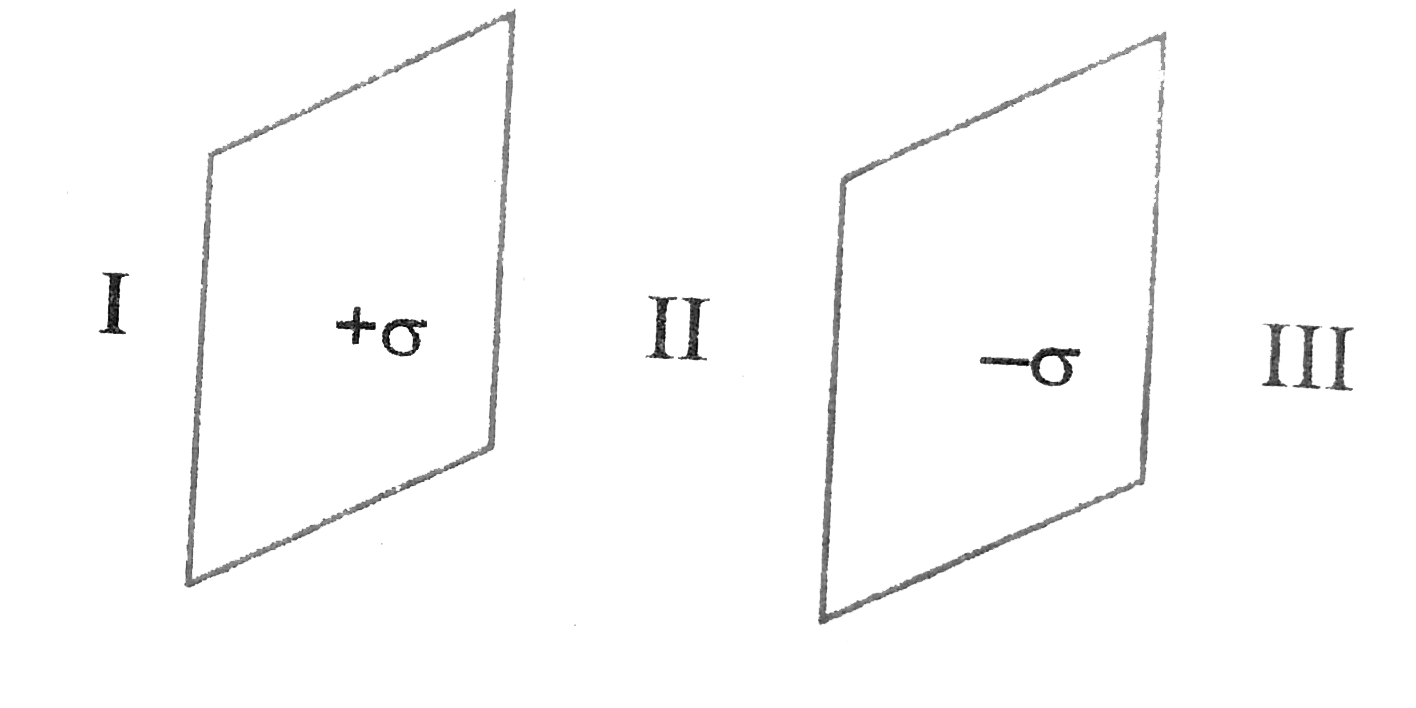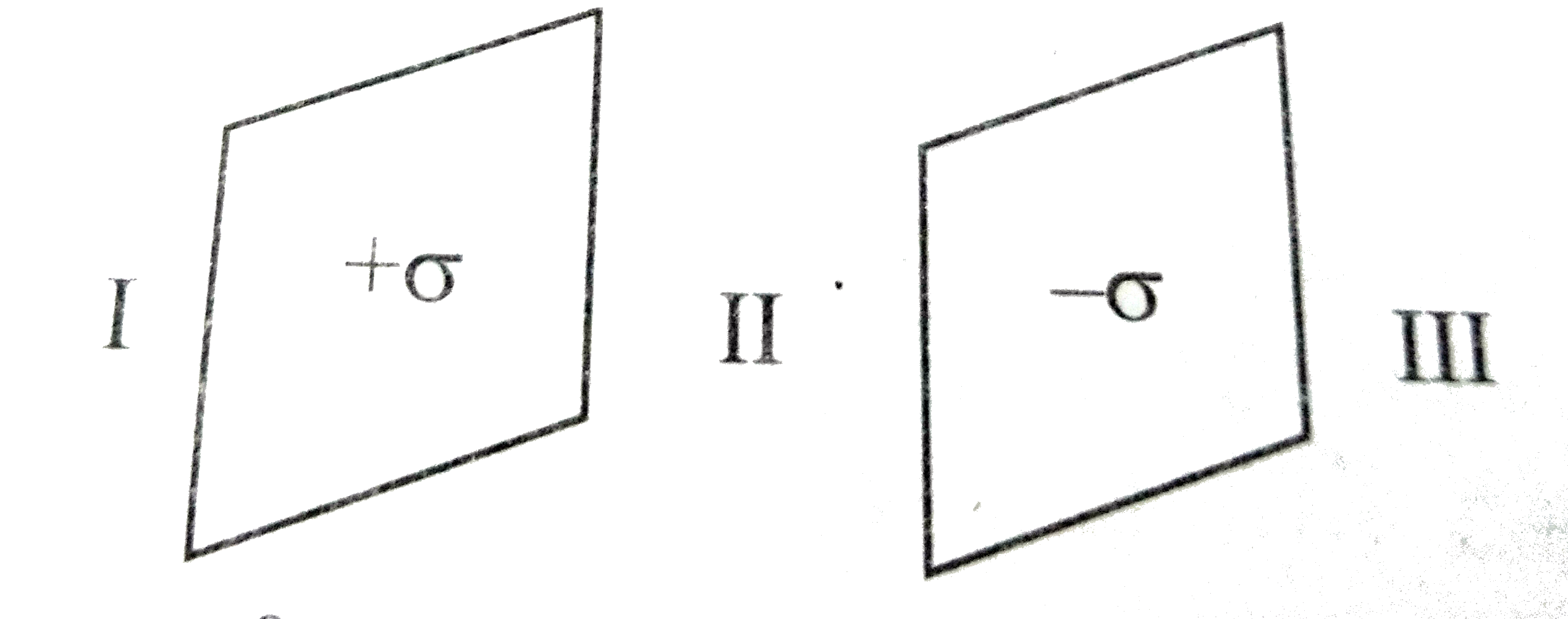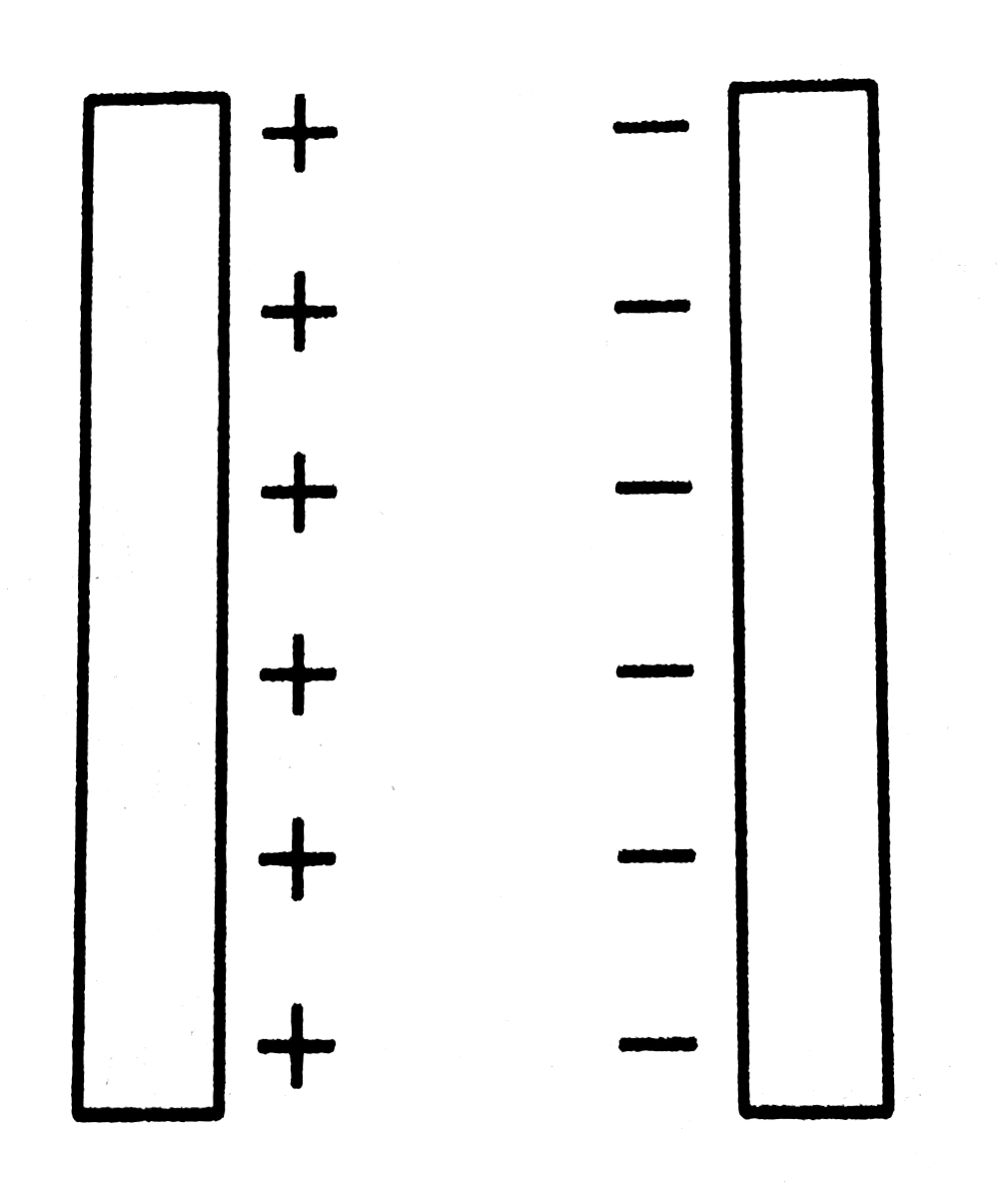Two large, thin metal plates are parallel and close to each other. On their inner faces, the plates have surface charge densities of opposite signs and of magnitude 17.0×10−22C/m2. What is E : between the plates?
To find the electric field E between two large, thin metal plates with surface charge densities of opposite signs, we can follow these steps:
Step 1: Identify the surface charge densities
Let the surface charge density on plate A (positive charge) be:
σ=17.0×10−22C/m2
And the surface charge density on plate B (negative charge) will also have the same magnitude but opposite sign:
−σ=−17.0×10−22C/m2
Step 2: Determine the electric field due to one plate
The electric field E due to an infinite plane sheet of charge is given by the formula:
E=σ2ϵ0
where ϵ0 is the permittivity of free space, approximately 8.85×10−12C2/N m2.
Step 3: Calculate the electric field due to plate A
For plate A (positive charge):
EA=σ2ϵ0=17.0×10−222×8.85×10−12
Step 4: Calculate the electric field due to plate B
For plate B (negative charge):
EB=−σ2ϵ0=−17.0×10−222×8.85×10−12
Step 5: Determine the net electric field between the plates
The net electric field E between the plates is the sum of the electric fields due to both plates:
E=EA+EB
Since EB is in the opposite direction, we can write:
E=σ2ϵ0+(−σ2ϵ0)=σϵ0
Step 6: Substitute the values and calculate
Substituting the values:
E=17.0×10−228.85×10−12
Step 7: Perform the calculation
Calculating the above expression:
E≈1.9×10−10N/C
Final Answer
Thus, the electric field E between the plates is approximately:
E≈1.9×10−10N/C
---
Let the surface charge density on plate A (positive charge) be:
σ=17.0×10−22C/m2
And the surface charge density on plate B (negative charge) will also have the same magnitude but opposite sign:
−σ=−17.0×10−22C/m2
The electric field E due to an infinite plane sheet of charge is given by the formula:
E=σ2ϵ0
where ϵ0 is the permittivity of free space, approximately 8.85×10−12C2/N m2.
For plate A (positive charge):
EA=σ2ϵ0=17.0×10−222×8.85×10−12
For plate B (negative charge):
EB=−σ2ϵ0=−17.0×10−222×8.85×10−12
The net electric field E between the plates is the sum of the electric fields due to both plates:
E=EA+EB
Since EB is in the opposite direction, we can write:
E=σ2ϵ0+(−σ2ϵ0)=σϵ0
Substituting the values:
E=17.0×10−228.85×10−12
Calculating the above expression:
E≈1.9×10−10N/C
Thus, the electric field E between the plates is approximately:
E≈1.9×10−10N/C
Topper's Solved these Questions
- BOOK - VMC MODULES ENGLISHCHAPTER - ELECTROSTATICSEXERCISE - LEVEL - 0 (LONG ANSWER TYPE )8videos
ELECTROSTATICS
- BOOK - VMC MODULES ENGLISHCHAPTER - ELECTROSTATICSEXERCISE - LEVEL - 1105videos
ELECTROSTATICS
- BOOK - VMC MODULES ENGLISHCHAPTER - ELECTROSTATICSEXERCISE - JEE Advanced (Archive)89videos
ELECTROSTATICS
- BOOK - VMC MODULES ENGLISHCHAPTER - ELECTROMAGNETIC INDUCTION & ALTERNATIVE CURRENT EXERCISE - IMPECCABLE52videos
ELECTROMAGNETIC INDUCTION & ALTERNATIVE CURRENT
- BOOK - VMC MODULES ENGLISHCHAPTER - ENERGY & MOMENTUMEXERCISE - JEE ADVANCE (ARCHIVE) - TRUE/FALSE TYPE1videos
ENERGY & MOMENTUM
Similar Questions
Two large this metal plates are parallel and close to each other. On their inner faces, the plates have surface charge densities of opposite signs and magnitude 17.0×10−22C/m2. What is →E : (a) In the outer region of the first plate. (b) In the outer region of the secound plate, and (c) Between the plates ? See Fig.
 View Solution
View SolutionTwo large thin metal plates are parallel and close to each other. On their inner faces, the plates have surface charge densities of opposite signs and magnitude 27×10−22Cm−2. The electric field →E in region II in between the plates is
 View Solution
View Solution
Knowledge Check
- Question 1 - Select One
Two large, thin plates are parallel and close to each other. On their inner faces, the plates have surface charge densities of opposite signs and of magnitude 16×10−22Cm−2. The electric field between the plates is
A1.8×10−10NC−1B1.9×10−10NC−1C1.6×10−10NC−1D1.5×10−10NC−1 - Question 2 - Select One
Two large parallel conducting plates are placed close to each other ,the inner surface of the two plates have surface charge densities +σ and −σ .The outer surfaces are without charge.The electric field has a magnitude of
A(sigma)/(epsi_(0)) in the region between the platesB''σε0 in the region between the platesC0Dnone of these
Two large, thin metal plates are parallel and close to each other. On their faces, the plates have surfaces charge densities of opposite sign and of magnitude .177×10−11 coulomb per square metre. What is electric field
(i) to the left of the plates ?
(ii) to the right of the plates ?
(iii) in between the plates ?View SolutionTwo parallel large thin metal sheets have equal surface charge densities (σ=26.4×10−12C/m2) of opposite signs. The electric field between these sheets is
View SolutionTwo large conducting plates are placed parallel to each other nad they carry equal and opposite charges with surface density σ as shown in figure (30-E6). Find the electric field (a) at the left of the plates, (b) in between the plates and © at the right of the plates.
 View Solution
View SolutionIf we introduce a large thin metal plate between two point charges, what will happen to the force between the charges?
View SolutionTwo thin infinite parallel plates have uniform charge densities +σ and −σ. The electric field in the space between them is
View SolutionTwo large glass plates are placed vertically and parallel to each other inside a tank of water with separation between the plates equal to 1 mm. Find the rise of water in the space between the plates. Surface tension of water =0.075Nm−1.
View Solution

